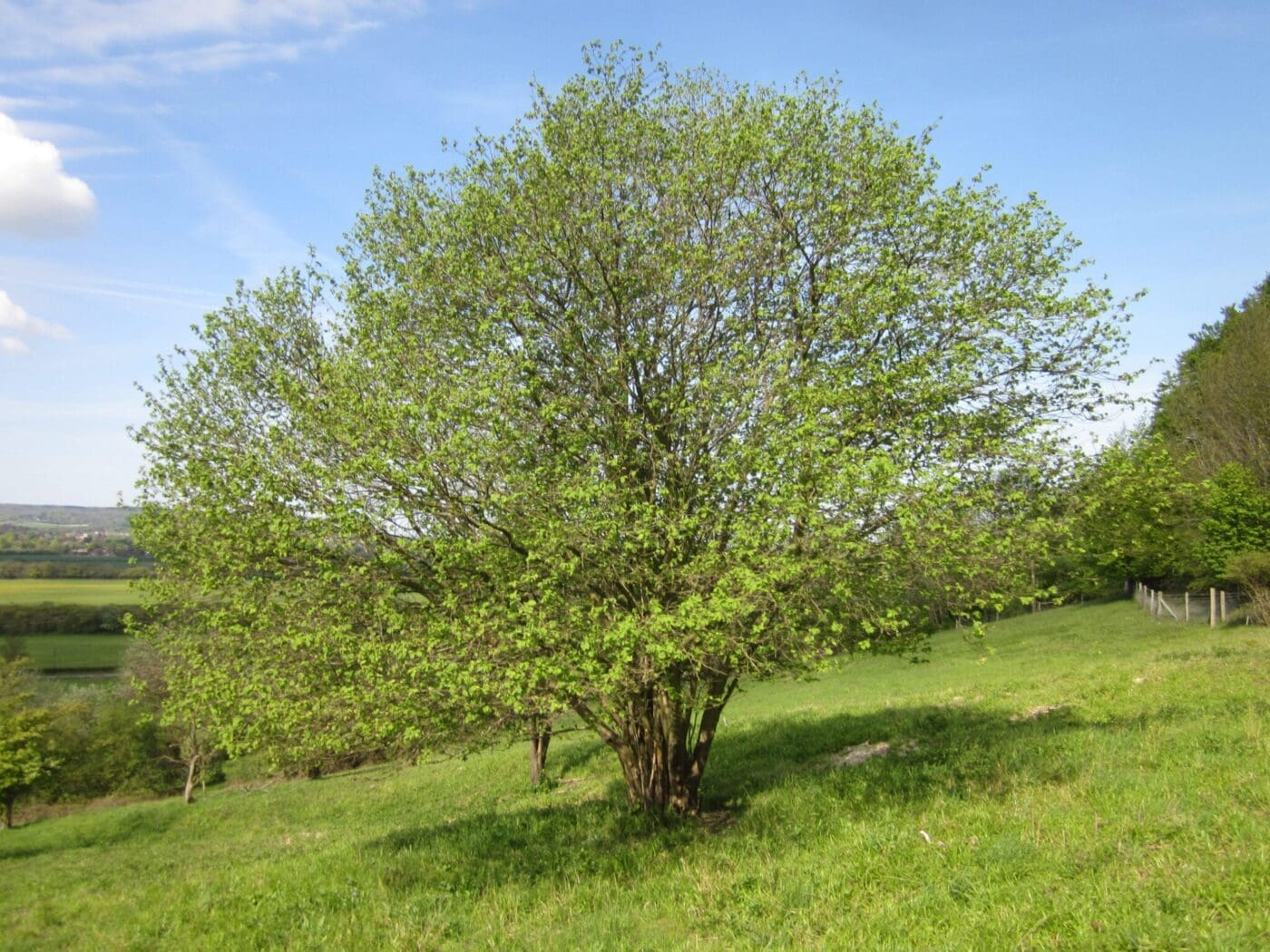The hazel tree is a fascinating species that can be found growing in woodlands, hedgerows, and gardens across much of Europe. With its rounded leaves, hanging catkins, and tasty nuts, the hazel has many distinctive features that make it easy to identify. In this article, we’ll explore what a hazel tree looks like during every season so you can learn to recognize this versatile plant.
Spring
The first signs of the hazel appear in late winter as it produces its famous ‘lambs tail’ catkins. These long, yellow-brown clusters of male flowers emerge along the branches, trembling in the breeze. They release clouds of pollen which fertilize the tiny female flowers.
In March and April, the green hazel leaves start to unfurl These are round with a heart-shaped base and serrated edges The young leaves have a fuzzy feel and may have a slight reddish tinge.
Summer
By early summer, the hazel foliage is fully developed. The leaves are alternately arranged, 3-12 cm long and oval with a pointed tip. The upper surface is dark green and slightly hairy while the underside is paler with tufts of brown hairs along the veins.
Beautiful displays of bluebells, wood anemones, and other woodland flowers often carpet the ground below hazel trees in summer. This is because hazel foliage allows dappled sunlight to reach the woodland floor.
Autumn
One of the delights of the hazel is its edible nuts which ripen in autumn Look out for the clusters of nuts protected by a frilly, leaf-like husk Each nut is enclosed in a woody shell. Squirrels adore hazelnuts so you may spot them scurrying around in the branches, gathering nuts.
The leaves turn golden before falling in autumn Hazel bark is smooth and silvery-grey with small white speckles.
Winter
Bare hazel branches make a stark silhouette against winter skies. You may notice the buds for next year’s catkins forming – the male buds are larger and more spherical than the female buds.
With the foliage gone, it’s easier to observe the hazel’s gnarled, twisting growth form. The trunk often divides low down into multiple stems which branch elegantly. Coppiced hazels have multiple straight stems arising from the stump.
Identification Tips
-
Look for the hanging, yellowish catkins in late winter. No other native tree has similar flowers.
-
Leaves alternate along the shoot, unlike the opposite leaves of ash or maple.
-
Nuts ripening in autumn are a giveaway. No other native tree produces nuts enclosed in leafy husks.
-
Bark is smooth with small white speckles, unlike the peeling bark of birch trees.
-
Often multi-stemmed, especially if coppiced in the past.
So next time you’re walking in the woods or admiring trees in your neighborhood, see if you can spot the distinctive features of the humble hazel. It’s a tree with year-round interest and beauty.
StatisticsHeight: up to 12m
Jon Hawkins, Surrey Hills Photography
How you can help
As a charity we rely on memberships. They help us look after over 2,300 nature reserves and protect the animals that call them home.
How to identify a Hazel tree
FAQ
How big does a hazelnut tree grow?
|
Genus Name
|
Corylus americana
|
|
Light
|
Sun
|
|
Height
|
10 to 15 feet
|
|
Width
|
8 to 15 feet
|
|
Flower Color
|
Red
|
What does a hazelnut tree look like?
The common hazelnut tree is characterized by multiple stems, and the younger stems are usually bronze in color, while the mature stems are brown. The buds are oval-shaped and green in color. The tree produces flowers quite early in the spring. Its flowers are monoecious, which means that both male and female flowers can be found on the same tree.
How big does a hazel tree get?
The Hazel tree was so named because it often grows on the edges of fields or woods. Hazel trees are native to Europe, Asia, and North America. They grow best in moist, well-drained soils and full sun. Hazel trees can reach a height of 20-30 feet (6-9 meters) with a spread of 10-15 feet (3-4.5 meters).
What is a hazel tree?
Hazel is a flowering shrub or tree in the plant genus Corylus and the birch family Betulaceae. The tree has a clumping habit making it appear as a large shrub with a rounded, umbrella-like canopy. Depending on the hazel species, the shrub-like tree grows between 8 and 20 ft. (2.5 – 6 m) tall.
What does a common hazel look like?
The common hazel is also called the European hazel, and it’s a tall suckering shrub with a spreading, umbrella-like canopy. Common hazel is identified by its showy yellowish flowers, rounded serrated leaves, and edible brown nuts that grow in greenish papery parcels.
- The Ultimate Guide to Growing Strawberries in Raised Beds - August 8, 2025
- No-Dig Garden Beds: The Easiest Way to Grow a Beautiful Garden - August 6, 2025
- How to Protect and Preserve Wood for Raised Garden Beds - August 6, 2025

